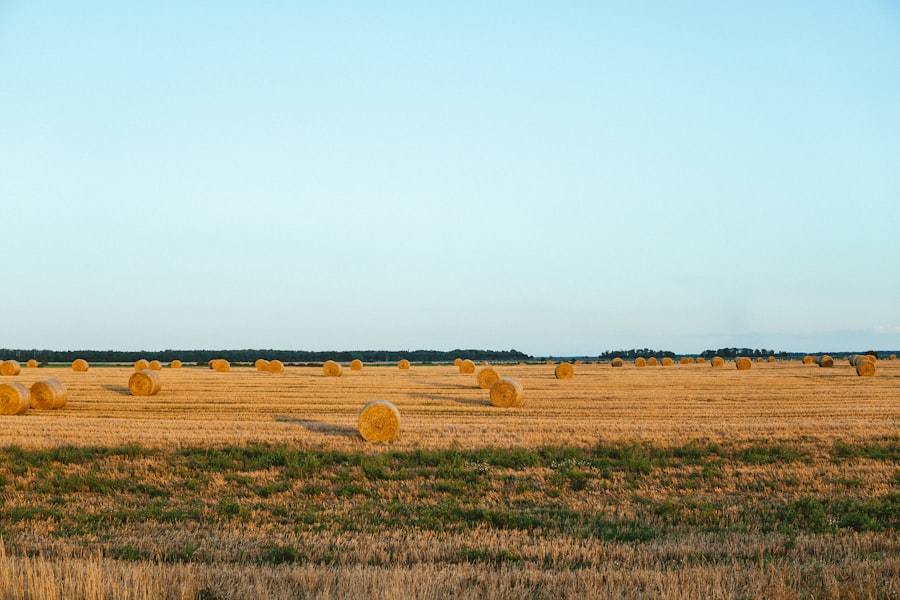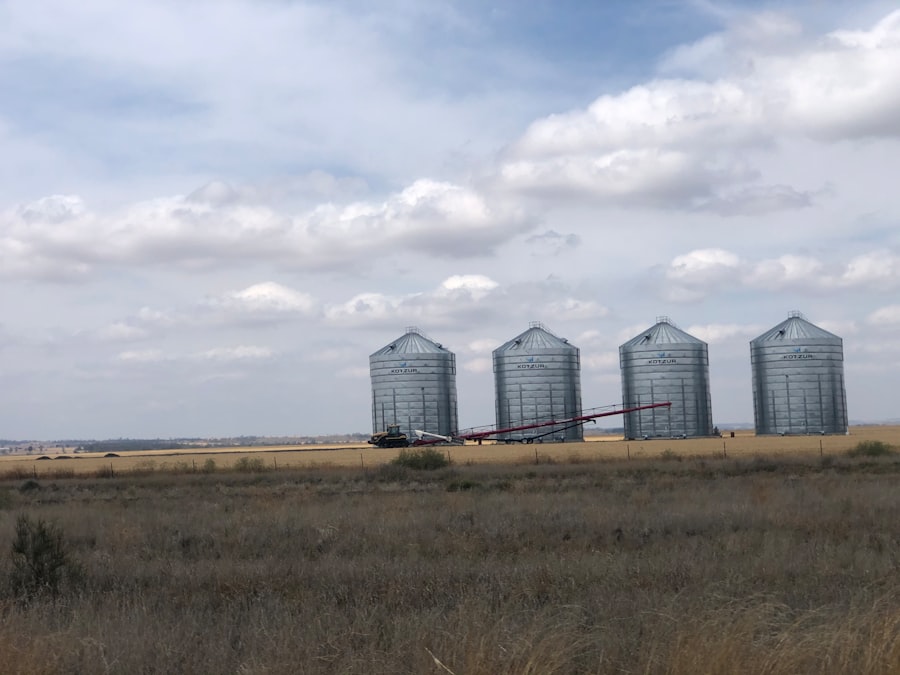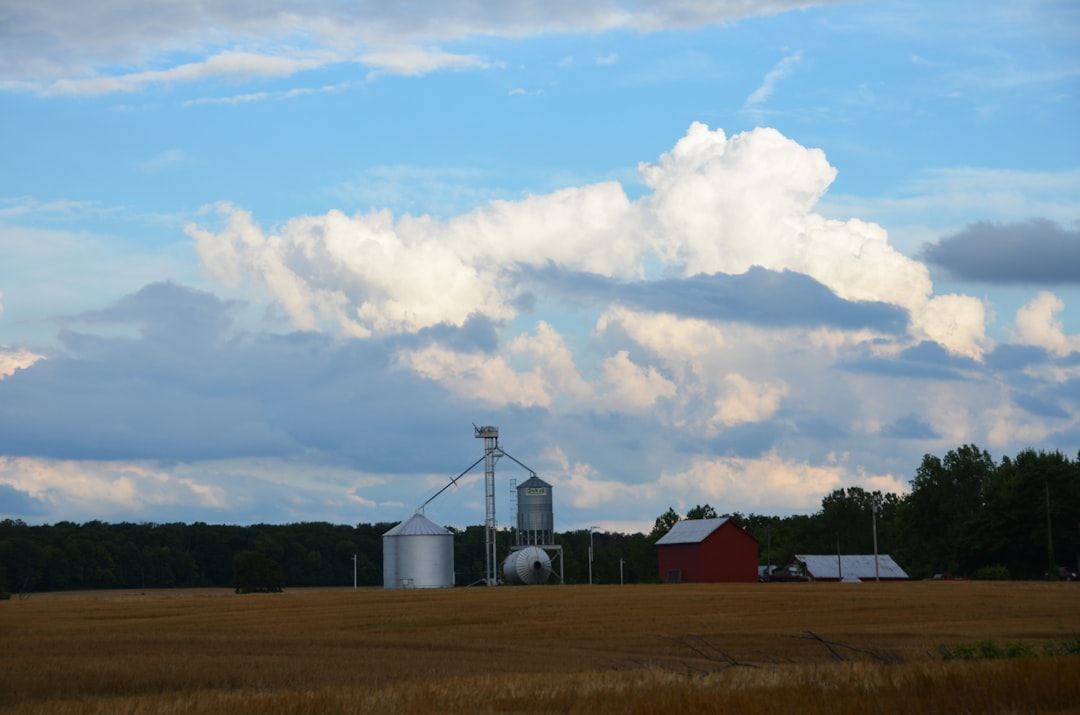The Great Plains, a vast expanse of flatlands stretching across the central United States and parts of Canada, is a region characterized by its unique geography and climate. This area, often referred to as the “breadbasket of America,” is known for its fertile soil and expansive fields, making it a crucial hub for agricultural production. The Great Plains encompass several states, including Nebraska, Kansas, South Dakota, and Oklahoma, and are defined by their rolling hills, prairies, and occasional woodlands.
The climate is predominantly semi-arid, with hot summers and cold winters, which significantly influences the types of crops that can be cultivated and the farming practices employed. The significance of the Great Plains extends beyond its agricultural output; it is also a region rich in cultural history and diversity. Indigenous peoples have inhabited these lands for thousands of years, developing intricate systems of agriculture and trade long before European settlers arrived.
The arrival of settlers in the 19th century marked a transformative period for the Great Plains, as they brought new farming techniques and technologies that would forever alter the landscape. Today, the Great Plains continue to be a vital part of the American economy, contributing significantly to food production and agricultural innovation.
Key Takeaways
- The Great Plains region is known for its vast, flat expanses of land and is a major agricultural hub in the United States.
- Agriculture has been a cornerstone of the Great Plains economy since the 19th century, shaping the region’s history and development.
- The economic impact of agriculture in the Great Plains is significant, contributing to the region’s overall prosperity and employment opportunities.
- Great Plains farmers face challenges such as unpredictable weather patterns, fluctuating market prices, and access to resources like water and land.
- Environmental issues related to Great Plains agriculture include soil erosion, water depletion, and the impact of chemical use on the ecosystem.
Historical overview of agriculture in the Great Plains
Agriculture in the Great Plains has a storied history that dates back to ancient times. Indigenous tribes such as the Sioux and Cheyenne practiced sustainable farming methods, cultivating crops like corn, beans, and squash. These early agricultural practices were deeply intertwined with their cultural traditions and spiritual beliefs.
However, the arrival of European settlers in the 19th century brought about significant changes. The Homestead Act of 1862 encouraged thousands of settlers to move westward, promising them land in exchange for farming it. This influx of settlers led to the establishment of numerous farms and ranches across the region.
The introduction of mechanized farming equipment in the late 19th and early 20th centuries revolutionized agriculture in the region. Tractors replaced horses, and new plowing methods allowed farmers to cultivate previously unmanageable land.
The expansion of railroads further facilitated the transportation of crops to markets, solidifying the Great Plains’ status as a key agricultural region. However, this rapid development also led to environmental degradation, as over-farming and poor land management practices began to take their toll on the soil.
The economic impact of agriculture in the Great Plains

Agriculture remains a cornerstone of the economy in the Great Plains, providing livelihoods for millions of people and contributing significantly to local and national economies. The region is known for its production of staple crops such as wheat, corn, and soybeans, as well as livestock farming, particularly cattle ranching. The economic impact of agriculture extends beyond direct farming activities; it also encompasses related industries such as food processing, transportation, and retail.
This interconnectedness creates a robust economic ecosystem that supports rural communities and sustains local economies. Moreover, agriculture in the Great Plains plays a vital role in national food security. The region’s vast fields produce a significant portion of the country’s grain supply, making it essential for feeding both domestic populations and international markets.
The economic contributions of agriculture are not limited to crop production; they also include job creation in various sectors associated with farming. From agricultural research institutions to equipment manufacturing companies, the ripple effects of agricultural success can be felt throughout the economy.
Challenges faced by Great Plains farmers
| Challenges Faced by Great Plains Farmers |
|---|
| 1. Drought |
| 2. Soil Erosion |
| 3. Pests and Diseases |
| 4. Fluctuating Market Prices |
| 5. Access to Water |
Despite its economic significance, agriculture in the Great Plains is fraught with challenges that threaten the viability of farming operations. One of the most pressing issues is climate variability. Farmers in this region face unpredictable weather patterns, including droughts, floods, and extreme temperatures.
These climatic fluctuations can severely impact crop yields and livestock health, leading to financial instability for farmers who rely on consistent production. Additionally, market volatility poses another significant challenge for Great Plains farmers. Prices for agricultural commodities can fluctuate dramatically due to factors such as global demand, trade policies, and competition from other regions.
This unpredictability makes it difficult for farmers to plan their operations effectively and can lead to financial strain. Furthermore, many farmers struggle with rising input costs, including seeds, fertilizers, and fuel, which can erode profit margins and make it challenging to sustain their livelihoods.
Environmental issues related to Great Plains agriculture
The environmental impact of agriculture in the Great Plains is a complex issue that has garnered increasing attention in recent years. Intensive farming practices have led to soil degradation, loss of biodiversity, and water scarcity. The overuse of chemical fertilizers and pesticides has raised concerns about soil health and water quality, as runoff from agricultural fields can contaminate nearby rivers and lakes.
Moreover, the Great Plains are particularly vulnerable to erosion due to their flat terrain and high winds. Practices such as monoculture—growing a single crop over large areas—can deplete soil nutrients and reduce its resilience against erosion. As a result, many farmers are now facing the challenge of balancing productivity with environmental stewardship.
Sustainable farming practices are becoming increasingly important as farmers seek to mitigate their impact on the environment while maintaining their livelihoods.
Technological advancements in Great Plains agriculture

In response to the challenges faced by farmers in the Great Plains, technological advancements have emerged as a beacon of hope for enhancing agricultural productivity and sustainability. Precision agriculture is one such innovation that has gained traction in recent years. By utilizing data analytics, GPS technology, and remote sensing tools, farmers can optimize their use of resources such as water and fertilizers.
This targeted approach not only improves crop yields but also minimizes environmental impact by reducing waste. Additionally, advancements in biotechnology have led to the development of genetically modified organisms (GMOs) that are more resistant to pests and diseases. These crops can thrive in challenging conditions, providing farmers with greater resilience against climate variability.
Furthermore, innovations in irrigation technology have allowed farmers to conserve water while ensuring their crops receive adequate moisture—a critical factor in an area prone to droughts.
The role of government policies in shaping Great Plains agriculture
Government policies play a crucial role in shaping the landscape of agriculture in the Great Plains. Various programs at both state and federal levels provide support to farmers through subsidies, grants, and technical assistance aimed at promoting sustainable practices. The Farm Bill is one such piece of legislation that outlines funding for agricultural programs, including crop insurance and conservation initiatives designed to protect natural resources.
Moreover, government policies can influence market access for farmers through trade agreements and regulations that affect exports and imports. These policies can either bolster or hinder farmers’ ability to compete in global markets. As such, ongoing dialogue between policymakers and agricultural stakeholders is essential for creating an environment that supports both economic growth and environmental sustainability.
The paradox of economic success and hardship in Great Plains agriculture
The narrative surrounding agriculture in the Great Plains is often marked by a paradox: while the region has achieved significant economic success through agricultural production, many farmers continue to face hardship. On one hand, advancements in technology and increased efficiency have led to record crop yields and profitability for some large-scale operations.
Many small- to medium-sized farms struggle to compete with larger agribusinesses that benefit from economies of scale. As a result, rural communities are witnessing a decline in family-owned farms, leading to concerns about food sovereignty and local economies. This dichotomy highlights the need for policies that support diverse farming operations while addressing systemic inequalities within the agricultural sector.
The future of Great Plains agriculture
Looking ahead, the future of agriculture in the Great Plains will likely be shaped by a combination of technological innovation, environmental stewardship, and adaptive management practices. As climate change continues to pose challenges for farmers, there will be an increasing emphasis on resilience-building strategies that allow farms to withstand extreme weather events while maintaining productivity. Furthermore, consumer preferences are shifting towards sustainably produced food options.
This trend presents an opportunity for Great Plains farmers to diversify their offerings by incorporating organic practices or specialty crops that cater to niche markets. By embracing sustainable practices and leveraging technology, farmers can position themselves for success in an evolving agricultural landscape.
Strategies for sustainable agriculture in the Great Plains
To ensure a viable future for agriculture in the Great Plains, implementing sustainable practices will be paramount. Crop rotation is one effective strategy that helps maintain soil health by preventing nutrient depletion and reducing pest populations. Additionally, cover cropping can enhance soil structure while providing habitat for beneficial organisms.
Water conservation techniques such as drip irrigation or rainwater harvesting can also play a critical role in mitigating water scarcity issues faced by farmers in this region. By adopting these practices alongside technological innovations like precision agriculture tools, farmers can work towards achieving both economic viability and environmental sustainability.
balancing economic prosperity and environmental conservation in Great Plains agriculture
In conclusion, agriculture in the Great Plains represents a complex interplay between economic prosperity and environmental conservation. While this region has long been recognized for its agricultural output and contributions to national food security, it faces numerous challenges that require thoughtful solutions. By embracing sustainable practices and leveraging technological advancements while advocating for supportive government policies, farmers can navigate these challenges effectively.
The path forward lies in fostering a balance between productivity and environmental stewardship—ensuring that future generations inherit not only a thriving agricultural economy but also a healthy ecosystem capable of sustaining life on these vast plains for years to come.
The economic paradox of Great Plains agriculture, characterized by vast expanses of fertile land yet persistent economic challenges, is a topic of significant interest among economists and geographers. A related article that delves into the geographical and economic intricacies of this region can be found on MyGeoQuest. This article provides insights into how geographical factors influence agricultural productivity and economic outcomes in the Great Plains. For a deeper understanding of these dynamics, you can explore the article by visiting this link.
WATCH NOW! Why America’s Heartland Is Disappearing Fast
FAQs
What is the economic paradox of Great Plains agriculture?
The economic paradox of Great Plains agriculture refers to the region’s significant agricultural productivity and output, despite facing economic challenges such as low commodity prices, high production costs, and limited access to markets.
What are some factors contributing to the economic paradox of Great Plains agriculture?
Factors contributing to the economic paradox of Great Plains agriculture include volatile commodity prices, high input costs, limited access to markets, and the region’s dependence on export markets.
How does the economic paradox of Great Plains agriculture impact farmers and the agricultural industry?
The economic paradox of Great Plains agriculture can lead to financial stress for farmers, reduced profitability, and challenges in sustaining agricultural operations. It also affects the overall economic health of the agricultural industry in the region.
What are some potential solutions to address the economic paradox of Great Plains agriculture?
Potential solutions to address the economic paradox of Great Plains agriculture include diversifying crops, adopting sustainable farming practices, investing in value-added agriculture, improving access to markets, and implementing policies to support farmers and the agricultural industry.
